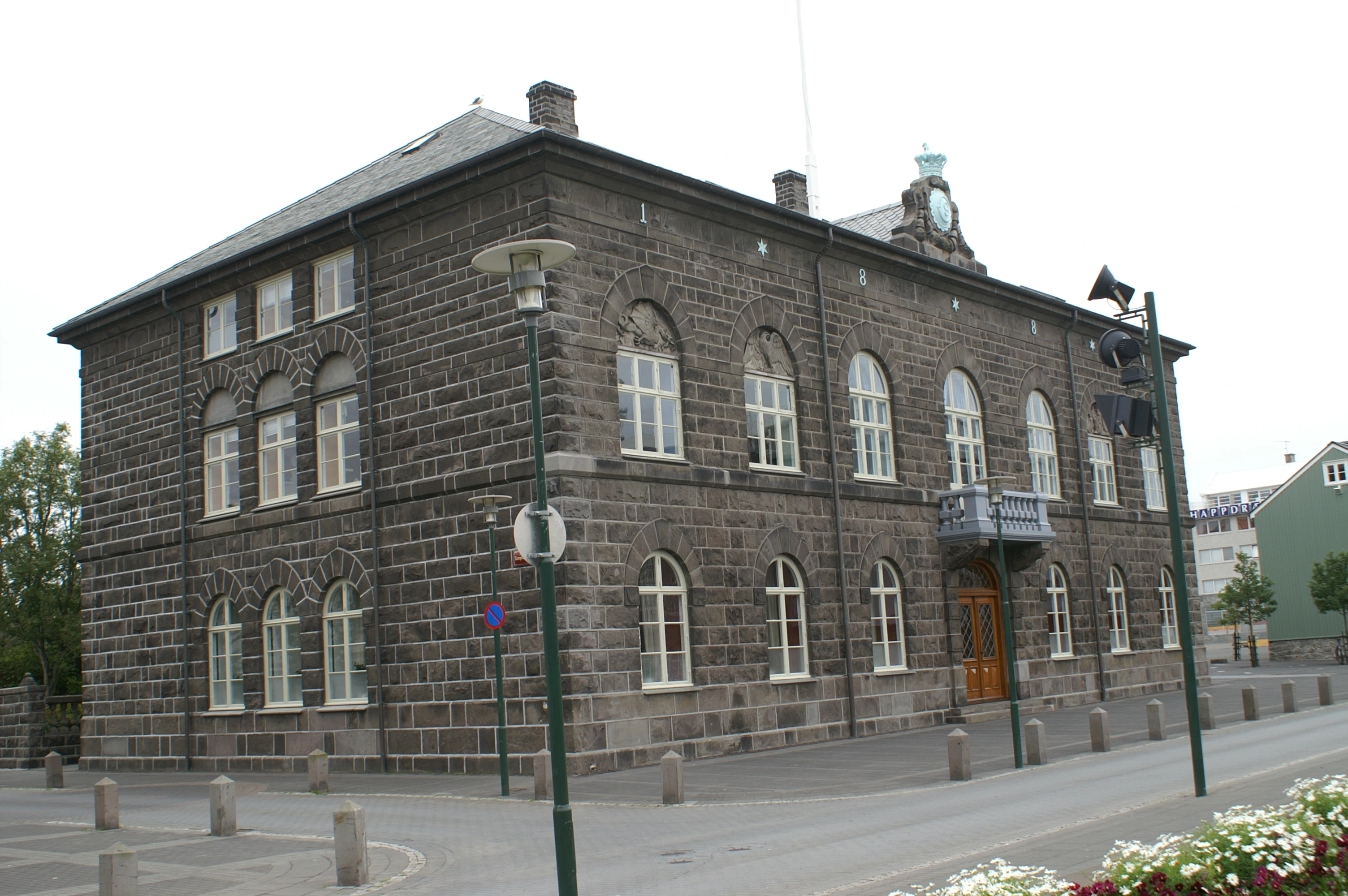




Alþingishúsið
The Althingi, located in Reykjavik, Iceland, is the country's parliament building. It holds great historical significance as Iceland's center of government. The building was completed in 1881 and is constructed from hewn Icelandic stone, giving it a distinctive, sturdy appearance. Althingi is one of the oldest parliamentary institutions in the world, tracing its origins back to 930 AD when it was first established as an outdoor assembly at Thingvellir. This makes it a symbol of Iceland's long-standing democratic traditions. The current structure houses the national parliament where elected representatives gather to discuss and make laws for the country. Inside the Althingi, there are several important rooms, including the main chamber where debates and legislative activities take place. The building also contains offices for members of parliament and other facilities necessary for its operations. Visitors to Reykjavik can view this historic site from the outside or even take guided tours to learn more about Iceland's political history. The Althingi stands not only as a functional government building but also as a monument to the enduring spirit of democracy in Iceland.
Tuesday: 8:00 AM – 5:00 PM
Wednesday: 8:00 AM – 5:00 PM
Thursday: 8:00 AM – 5:00 PM
Friday: 2:00 – 4:00 PM
Saturday: Closed
Sunday: Closed
+354 563 0500
https://althingi.is/
The Area
Top ways to experience
Alþingishúsið
What other travelers are saying about
Alþingishúsið
Very unique building. It was very interesting. Very close to the city centre. Walking distance from the church. The ambience is nice. A must visit to see such a different kind of parliament. Iceland is really a unique place with beautiful landscapes and outstanding architecture. Also close to it there are many places to see . Also you can sit quietly and find peace. The Alþingi ; Icelandic for 'general meeting'), anglicised as Althingi or Althing, is the supreme national parliament of Iceland. It is one of the oldest surviving parliaments in the world.The Althing was founded in 930 at Þingvellir ('thing fields' or 'assembly fields'), about 45 kilometres (28 mi) east of what later became the country's capital, Reykjavík. After Iceland's union with Norway in 1262, the Althing lost its legislative power, which was not restored until 1903 when Iceland gained Home Rule from Denmark. For 641 years, the Althing did not serve as the parliament of Iceland; ultimate power rested with the Norwegian, and subsequently the Danish throne.Even after Iceland's union with Norway in 1262, the Althing still held its sessions at Þingvellir until 1800, when it was discontinued. It was restored in 1844 by royal decree and moved to Reykjavík.The restored unicameral legislature first came together in 1845 and after 1874 operated in two chambers with an additional third chamber taking on a greater role as the decades passed until 1991 when Althing became once again unicameral. The present parliament building, the Alþingishús, was built in 1881, made of hewn Icelandic stone. The unicameral parliament has 63 members, and is elected every four years based on party-list proportional representation.The current speaker of the Althing is Birgir Ármannsson.
It's a nice looking building. I just didn't realise it's the Parliament, because it's too small 🤷♂️
As we take in the scenic views of Iceland’s Parliament building from the garden, our knowledgeable guide provides insightful commentary on the historical significance of Vigdís Finnbogadóttir, who made history in 1980 by becoming the world's first democratically elected female president. 🇮🇸
Nearby attractions to see
Frequently asked questions
What is the architectural style of Althingi?
Althingi, the Parliament House of Iceland, is built in a classical 19th-century style using hewn dolerite stone, which gives it a distinctive and solid appearance.
When was the Althingi building constructed?
The Althingi building was constructed in 1881 and has been the seat of the Icelandic parliament since then.
What historical significance does Althingi hold?
Althingi is one of the oldest parliamentary institutions in the world, dating back to its establishment as a general assembly in Þingvellir in 930 AD.
Can visitors tour inside the Althingi building?
Yes, visitors can tour inside Althingi during specific times when Parliament is not in session, offering insights into Iceland's legislative process and history.
What unique feature can be found at Althingi's location?
Althingi is uniquely located near Austurvöllur Square in Reykjavik, which serves as a popular gathering place for locals and hosts various public protests and celebrations.


_(2).webp)





